Hans von Blows Letters to Johannes Brahms
A Research Edition
Edited by Hans-Joachim Hinrichsen Translated by Cynthia Klohr
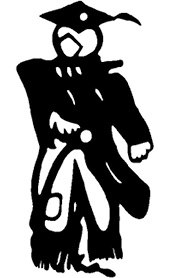
the scarecrow press, inc.
Lanham Toronto Plymouth, UK
2012
Published by Scarecrow Press, Inc.
A wholly owned subsidiary of The Rowman & Littlefield Publishing Group, Inc.
4501 Forbes Boulevard, Suite 200, Lanham, Maryland 20706
http://www.scarecrowpress.com
Estover Road, Plymouth PL6 7PY, United Kingdom
Copyright 2012 by Cynthia Klohr (English language translation)
original German language Hans-Joachim Hinrichsen
Title of the German original: Hans von Blow. Die Briefe an Johannes Brahms. Published in 1994 by Hans Schneider, Tutzing
Illustrations by permission of the National Library at Berlin, Prussian Cultural Heritage Foundation, Department of Music
All rights reserved. No part of this book may be reproduced in any form or by any electronic or mechanical means, including information storage and retrieval systems, without written permission from the publisher, except by a reviewer who may quote passages in a review.
British Library Cataloguing in Publication Information Available
Library of Congress Cataloging-in-Publication Data
Blow, Hans von, 18301894.
[Correspondence. Selections. English]
Hans von Blows letters to Johannes Brahms : a research edition / edited by
Hans-Joachim Hinrichsen ; translated by Cynthia Klohr.
p. cm.
Originally published: Hans von Blow. Die Briefe an Johannes Brahms.
Tutzing : Hans Schneider, 1994.
Includes bibliographical references and index.
ISBN 978-0-8108-8215-7 (cloth : alk. paper) ISBN 978-0-8108-8216-4
(ebook)
1. Blow, Hans von, 1830-1894Correspondence. 2. Brahms, Johannes,
18331897Correspondence. 3. Conductors (Music)GermanyCorrespondence.
4. ComposersGermanyCorrespondence. I. Hinrichsen, Hans-Joachim. II.
Title.
ML422.B9A413 2012
780.92dc23
[B] 2011027009
 The paper used in this publication meets the minimum requirements of American National Standard for Information SciencesPermanence of Paper for Printed Library Materials, ANSI/NISO Z39.48-1992.
The paper used in this publication meets the minimum requirements of American National Standard for Information SciencesPermanence of Paper for Printed Library Materials, ANSI/NISO Z39.48-1992.
Printed in the United States of America
Foreword to the 1994 German Edition
O ne hundred years after Hans von Blows death, this work presents for the first time a complete and commented edition of his letters to Johannes Brahms. Three final volumes (dating 1904, 1907, and 1908) of the large eight-volume publication of Blows correspondence arranged by his widow (parts of which were prepublished in 1907 in Neue Deutsche Rundschau ) did contain some of Blows letters to Brahms. But the edition fails to meet academic standards, as valuable as it may be in general. Its rigorous selection neglected several letters to Brahms. And those that did find their way into the eight volumes are rarely reproduced unabridged. Not every omission was noted, the names of some individuals still living at the time were masked, and even style was sometimes slightly altered. Clearly a new edition is desirable.
For making this edition possible through practical assistance and shared insights I thank Helmut Hell (National Library, Berlin) for permission to publish material; Ute Nawroth and Peter Thringer (National Library, Berlin) for support in accessing Hans von Blows letters and remaining papers, and Herta Mller (National Museum, Meiningen), Peter Cahn (Frankfurt/Main), and Kurt Hofmann (Brahms Institute, Lbeck) for advice on arranging the commentary.
Hans-Joachim Hinrichsen
Preface
H ans von Blows letters to Johannes Brahms are kept in the music section of the National Library at Berlin (Building 1, Unter den Linden), which also keeps papers of Blows estate inasmuch as Marie von Blow submitted them in several phases beginning in 1911. Fifty-six letters and one telegram have survived. In 1905 these were returned from Brahmss estate to Blows widow. The number of letters originally in Brahmss possession was slightly larger than the bundle of papers now kept in Berlin. We know this from notes on the outside envelope and from correspondence between Brahmss heirs and Marie von Blow.
Using a preprinted form, Marie von Blow pledged to a group of heirs represented by Josef Reitzes to protect their proprietary interests and maintain respect for Brahms or the writer, signed 5 May 1902 (SBB; Sign.: Mus. Ep. H. v. Blow Varia 4). After formalities were completed and necessary statements affirmed, the sheaf of documents was sent to her on 10 April 1905 by a Viennese notary of the public, who, however, on behalf of the group of heirs represented by Reitzes, requested the return of all papers (letters or enclosures) containing any notes made by Brahms (SBB; Sign.: Mus. Ep. H. v. Blow Varia 5). The outside envelope holding the letters given to Maria von Blow, itself not cataloged but kept together with the letters, exhibits several layers of handwritten notes revealing how much of the bundle was returned, probably to fulfill the notarys request: 60 pages thereof / 1 piece including a newspaper clipping / 1 [piece including ] a calling card / 1 piece [including] a concert program / 4 [pieces] in an envelope containing a note by Johannes Brahms / 1 small unsigned slip of paper / 1 telegram from Blow. The final mark, written in Marie von Blows handwriting, documents the stock as it is now: 56 letters from Blow to Brahms / 1 telegram to Joh. Brahms.
All of the letters were written in ink; some letters exhibit additional marks (some in blue pencil) discussed in the commentary. [The German edition presents the correspondence texts word for word based on the handwritten documents, normalizing some of Blows idiosyncratic signs and abbreviations.] The commentary provides information on the persons, events, and matters mentioned in the documents. In some instances it takes a bit of detail to explain the context that renders an otherwise isolated phrase understandable. The commentary provides (in italics) passages from Brahmss replies, inasmuch as they were accessible or have already been published.
At the back of this volume is a list of names indicating the number of the letter(s) in which a name occurs. Roman-type numbers indicate letters and (where applicable) the corresponding commentary. Numbers in italic type indicate that a name is mentioned in the commentary to that letter only. As a rule, information about individuals is provided the first time they appear; in all other cases the relevant commentary note can be easily found by consulting the index.
Notes
1. The entry for the epistles inventory to Brahmss estate also reads 60 Letters from Hans von Blow, cf. Alfred von Ehrmann, Johannes Brahms: Weg, Werk und Welt (Leipzig, 1933), p. 446.
2. The little unsigned scrap of paper mentioned in the oldest inventory still exists, but its significance is unclear. On it Blow wrote, Euripides can arrive just before the performance and return immediately afterward to Bamberg, where the hotel near the train station has good beds. / Perhaps the enclosed coupon for a visit to reserved rooms in the restaurant there (drinks not included) may persuade him (Sign.: Mus. ep. H. v. Blow Varia 7). Euripides is a nickname Blow sometimes used for Brahms (see commentary to letter no. 14).
For the English rendition, some abbreviations have been written out to facilitate readability.
Introduction
Hans von Blow (18301894) and Johannes Brahms (18331897)
T he correspondence between Hans von Blow and Johannes Brahms that has been preserved commences in the autumn of 1877, when Blow was forty-seven and Brahms forty-four, and it continues until the autumn of 1892. By the time their exchange of letters began, the two had already been acquainted for years; thus it helps to understand their relationship if we examine its earlier phases more carefully. Hans Guido Baron von Blow was born on 8 January 1830 in Dresden into a family whose lifestyle, despite nobility and heritage, was that of the cultured and educated middle class. Hanss father, Eduard von Blow, himself a well-received author and close friend of Ludwig Tieck, pursued a broad literary upbringing for his son; the child learned to speak French as fluently as German. Hanss mother, Francisca (ne Stoll), was related by marriage to the upper-class Frege family in Leipzig where, during one of his many holiday visits, the boy also met Mendelssohn. Destined early for a diplomatic career, Hans showed no particular signs of musical talent for years. Following several bouts of meningitis, however, some of which were life threatening, at the age of nine it was discovered that he had profound musicality, and systematic instruction in music was arranged. As the proven Blow family legend goes, at the age of twelve, on 19 October 1842, Hans experienced the premier performance of Rienzi at the Dresden court opera and it awakened him. He finished school in the spring of 1848 in Stuttgart, where the family had moved (for reasons unknown) in mid-1846. By far the greatest reward of Hanss youth in Stuttgart was a quickly made lifelong friendship with composer Joachim Raff, eight years his senior.

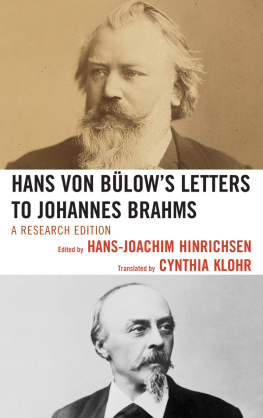

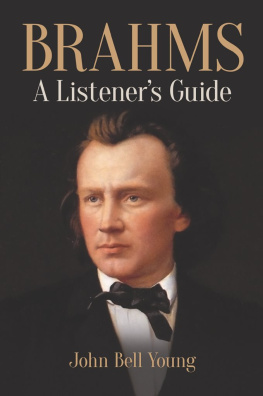



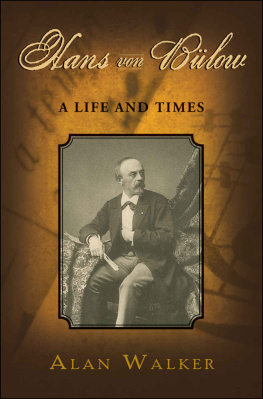
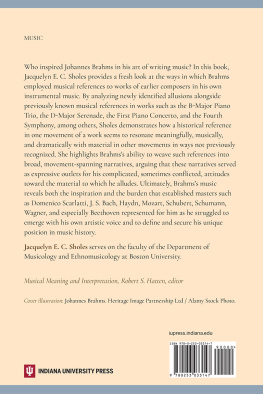
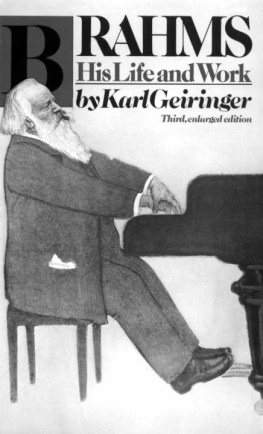
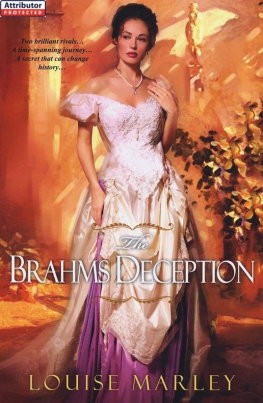

 The paper used in this publication meets the minimum requirements of American National Standard for Information SciencesPermanence of Paper for Printed Library Materials, ANSI/NISO Z39.48-1992.
The paper used in this publication meets the minimum requirements of American National Standard for Information SciencesPermanence of Paper for Printed Library Materials, ANSI/NISO Z39.48-1992.